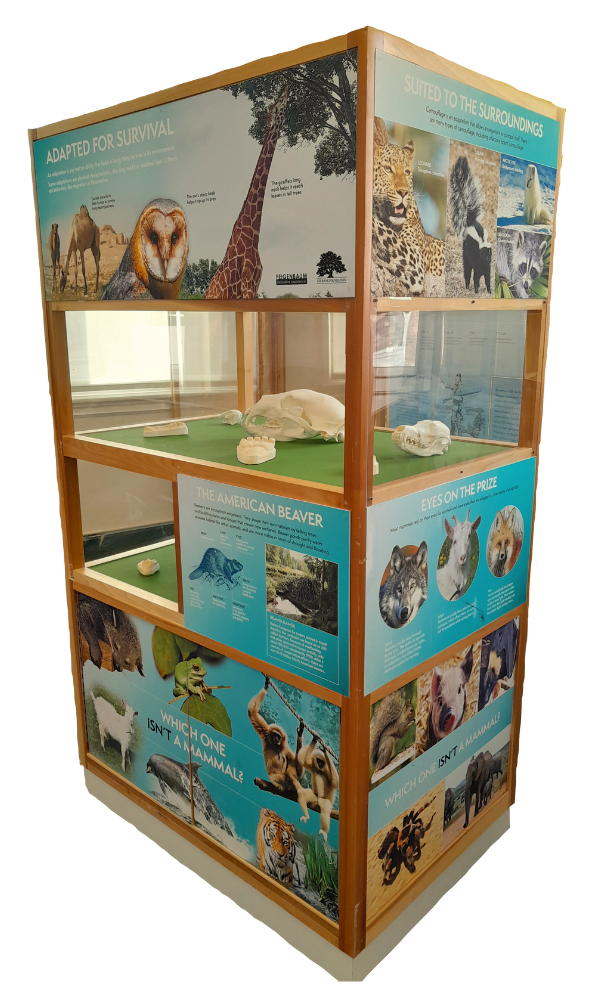Mammal Adaptations: Teeth vs. Food
The Mammals MoMU displays several different mammal skull and paw print replications, including rabbit, beaver, coyote, and black bear. The graphics define and identify animal adaptations for survival (such as claws, camouflage, and eye functions), as well as explaining the characteristics of mammals.
The Activation Lesson focuses on teeth and skulls. Learners examine different types of skulls up-close and explore the different functions of a mammal’s teeth through hands-on activities.
Younger learners evaluate pelts and skulls, synthesizing knowledge of both and finding connections, building one adaptation upon another. This is followed by an exercise where they create their own mammal and draw it’s habitat.
Older learners physical engage in hands-on exercises which mimic the actions of the three different types of teeth, analyzing how each one benefits different types of eaters. They then attempt a inferential drawing activity, sketching the habit of an mammal with only a skull and its teeth as indicators. And when they are comfortable with their habitat, another group devises a way to disrupt that ecosystem. Now the objective is to protect their mammal.
Core Standards
R.PK-12.1, R.PK-12.2, R.PK-12.4, SL.PK-12.1, SL.PK-12.4, SL.PK-12.6, L.PK-12.6
ES Standards
PreK-ESS3-2, PreK-LS1.3, PreK-LS2.2, PreK-LS3.1, K-LS-1-1, 1.LS.1.1, 1.LS.1.2, 1.LS.1.3, 2.LS2.3 (MA), 2.LS.4.1, 2.PS.1.3
3.LS.3.1, 3.LS.4.2, 3.LS.4.3, 3.LS.4.4, 4.LS.1.1, 5.LS.2.1, 5-6.V.P.06
MS/HS Standards
5-6.V.P.06, 6.LS.1.3, 6.LS.4.2, 6.ETS.1.1, 7.LS.1.4, 7.LS.2.2, 7.LS.2.4, 7.LS.2.5, 7.LS.2.6, 8.LS.4.4,
HS.LS.1.2, HS.LS.2.1, HS.LS.2.4, HS.LS.2.6, HS.LS.2.7, HS.LS.4.1, HS.LS.4.2, HS.ESS.3.3, HS.ETS.1.1, HS.ETS.1.3

